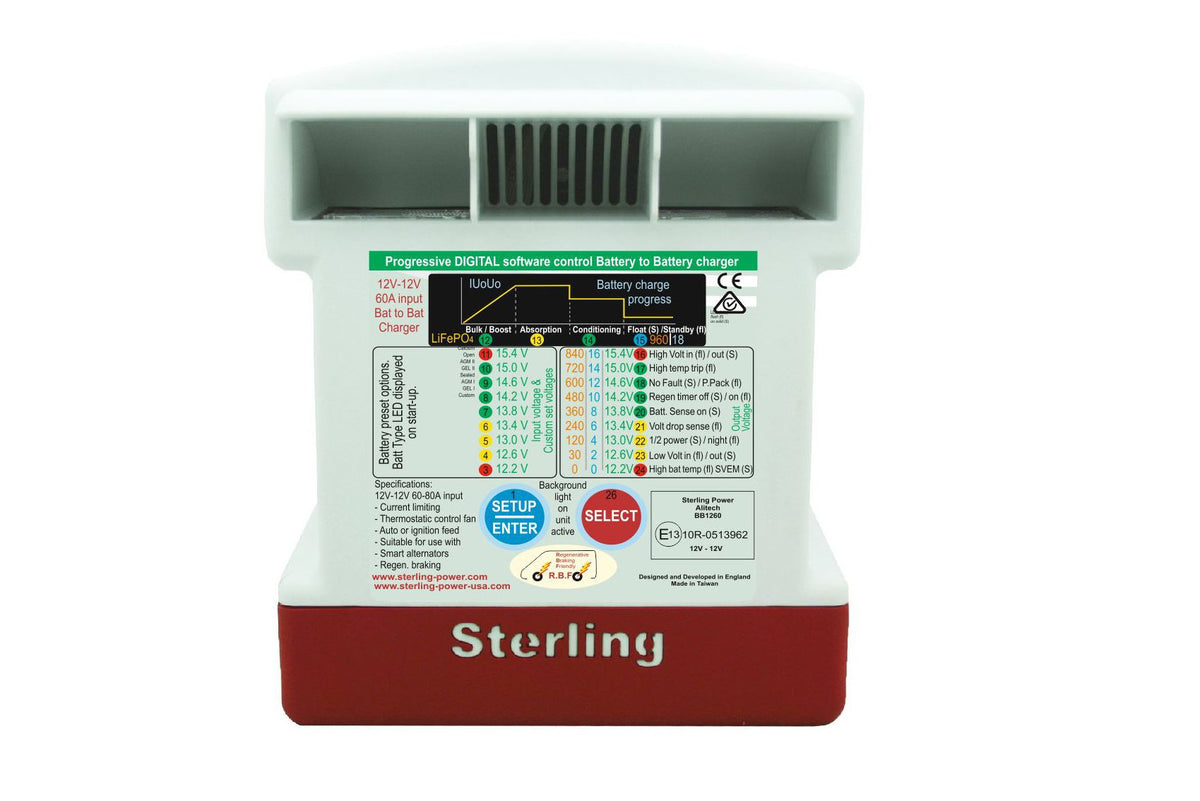Luthj, Could you tell us more about your setup and how it works? How do you adjust "sane" voltages for your alternator. Assuming you are just using OEM lead acid charge profile?
Thanks, Doug
Most alternators charge at 13.6-14.0V It will vary with temperature. Some vehicles are lower though, energy saving alternators may only be 13.3V.
13.6-14.0V is perfect for charging 12V nominal lithium batteries. No significant stress even if the charging continuous when they are full.
Lots of folks make the mistake of thinking your typical alternator has a "profile" and can sense current. While some vehicles have that ability, it is not common. The vast majority of alternators are simply a voltage source with an intrinsic current limit. The current limit is defined by the physical design (windings gauge). The voltage is set by the regulator which aims for a certain temperature compensated setpoint. Most alternators will be about 0.5V higher when cold, and will fairly quickly warm up and drop to their typical voltage.
You hear lots of talk about nuking automotive alternators with lithium. Much of this is carried over from the marine world. This is not readily applicable to automotive alternators made in the last 20 years. The marine world is typically 20 years behind the automotive realm when it comes to tech. Many still use V belt driven alternators for example. Many of which cannot produce their rated output. This gets even worse because marine engine compartments can be quite hot.
Cars/trucks have had extensive electrical systems for decades. AC, lights, heated seats, etc. All of which needs to operate at idle. Because of this most automotive alternators can safely be maxed out at idle speed in reasonable temps. Now 120F desert? Maybe not so much.
Also note that as the alternator heats up, its output voltage will drop. This is a self protection mechanism. As the voltage drops, the charge current into a battery will also drop.
So, what happens when you hit the current limit for the alternator? Well, the current stays steady, but the output voltage will drop to the equilibrium point. If you increase the load further, the starter battery will start to supply some of the load (below about 12.6V). This is common with winch equipped vehicles, which can need 400A to drive a big winch.
For example when I am charging my 560AH lithium pack, I close my charging relay. The LFP pack is at say, 13V and the alternator is at 14V. When the relay closes the LFP pack and the alternator must be at the same voltage minus any wiring drops. In my case that's about 0.2V at 100A. So at idle the LFP pack will rise to about 13.2V, the alternator will be at 13.4V, and the pack will charge at around 100A. This will rise to 150A at 2000rpm, and the voltage will come up slightly to 13.35V.




